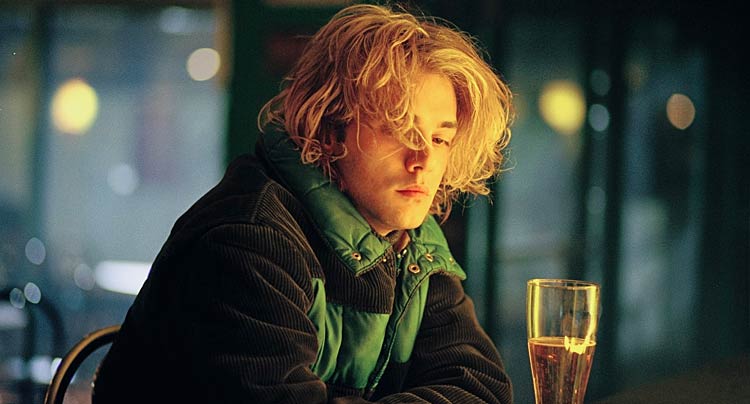
Characters make decisions based less in rationality and more in fulfilling the writer's needs.

Characters make decisions based less in rationality and more in fulfilling the writer's needs.
You can’t say that Xavier Dolan is one for slowing down. The 25 year old director/writer/actor/editor/costume designer (only a few of his credits) has made five films since 2009. Tom at the Farm is his fourth, and it’s a departure for the young filmmaker. It’s the first time Dolan is working with someone else’s material, adapting Michel Marc Bouchard’s play of the same name. It’s also the first genre film for Dolan, and the results are surprisingly subdued compared to the visual bombast of Les Amours Imaginaires or Laurence Anyways. Dolan’s assuredness behind the camera is increasing with every film he makes, and while Tom at the Farm shows signs of growth there’s still a long way to go.
Dolan plays the eponymous Tom, a young man mourning the loss of his boyfriend Guy. Tom drives out to visit Guy’s estranged family for the funeral, opting to stay at their home. Guy’s mother Agathe (Lise Roy) is kind at first, a lonely widow looking like she’s just happy to see a new face around the house. On the other hand, Guy’s older brother Francis (Pierre-Yves Cardinal) poses a severe threat to Tom; Agathe has no idea of her deceased son’s orientation, and Francis aggressively terrorizes Tom into making sure he won’t tell her the truth. Tom, fearing for his life, agrees to go along with the lie, telling Agathe about Guy’s “girlfriend” Sarah.
Tom ends up staying much longer than anticipated at the farm, as the three characters form a sort of twisted co-dependent relationship with each other. Agathe and Francis see Tom as the closest thing to getting their dead family member back, while Tom is drawn to Francis because of the similarities to his dead lover. It’s a complex relationship that, expectedly, begins to fall apart.

Roy and Cardinal dominate Tom at the Farm as the mourning family. Roy plays Agathe as a gentle yet distraught mother, a woman filled with frustration and sadness as she tries to ignore the obvious elephant in the room. Francis is a truly menacing figure, the type of man whose isolated existence has transferred his sexuality into pure, masculine aggression. There are some not so subtle hints at Francis being closeted, and the sexual undercurrent in his interactions with Tom provide much of the film’s intrigue.
Tom, on the other hand, is lacking as a character. There’s little else to him aside from the “grieving boyfriend” descriptor, and as he succumbs to a sort of Stockholm syndrome at the farm, the plausibility of his decisions quickly dissolve, mostly because of the film’s failure to properly establish his motivations. This is where Tom at the Farm falters: its characters make decisions based less in rationality and more in getting where the writer wants them to be. It’s difficult to go along with the story when the gears in its machine are so easily exposed.
The manipulation extends beyond the page as well. Dolan, seemingly unable to resist himself, lets one visual quirk slip through: during the film’s more physical confrontations the aspect ratio slowly changes, starting at 1.85:1 and squeezing down to a narrow rectangle on the screen. It’s an inspired choice, but ultimately an ineffective one as it distracts from the intensity of the scene. As a story about one man’s emotionally-charged immersion into a bizarre, dangerous situation, Tom at the Farm calls too much attention to itself before it can pull viewers in.
Originally published on May 27th, 2014.